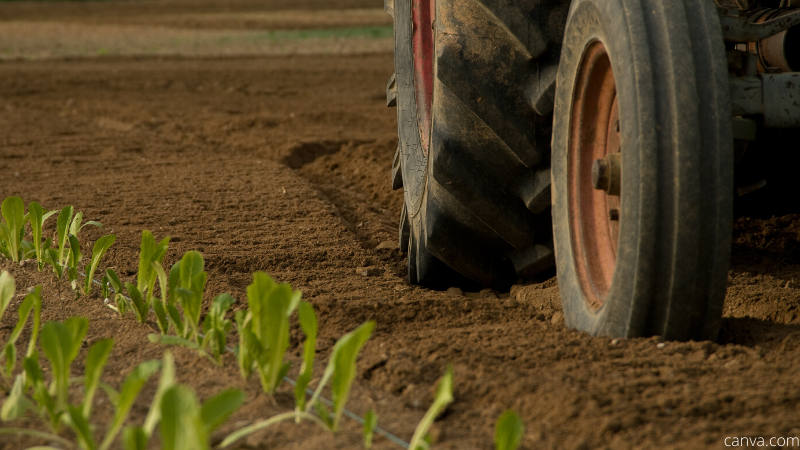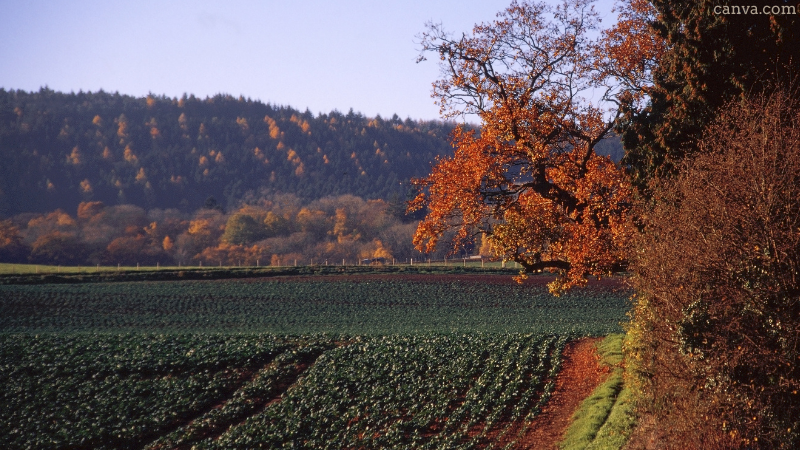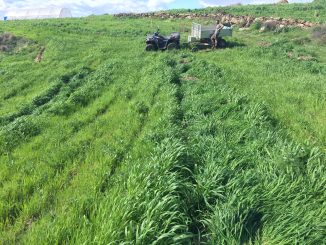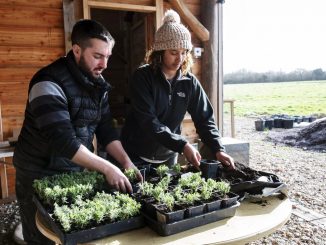
On 26 January, the future of post-Brexit agricultural policy in England became clearer with the government’s announcement of six new standards under its Sustainable Farming Incentive. While English farmers may cautiously welcome this long-awaited update, serious challenges remain for the sector in England, and across the United Kingdom. Marianne Landzettel reports. (title updated 22.44 on 29/01/23)
In the first week of January, British farmers travel to Oxford not for one, but two farming conferences. Conventional farmers and the representatives of agrichemical companies are likely to be found at the Oxford Farming Conference (OFC); the Oxford Real Farming Conference (ORFC) tends to be the meeting place for smaller, diverse family farms as well as anyone interested in organic and regenerative agriculture.
Because of the pandemic, both conferences had been held online for the past two years. The mood therefore was upbeat, it was good to once again meet fellow farmers in person. But it was equally clear that farmers have a lot of problems to deal with. The fallout from the pandemic and the war in Ukraine is hitting farmers across the EU and in Britain hard. Everyone has to deal with increased costs for energy, feed and fertilisers. But in addition, British farmers have to cope with the consequences of Britain’s exit from the EU, which became reality at the end of January 2020.
The true impact of Brexit is only now becoming clear
An outcome of Brexit is the end of hectare-based direct payments from Brussels under the Common Agricultural Policy (CAP). The legislatures in Scotland, Wales, and Northern Ireland are in charge of policies for farming. For England, agricultural policy is decided in Westminster.
One ORFC session took stock of where the four UK nations stand at present with post-Brexit farm policy. James Woodward from the NGO Sustain said England was leading in regard to ‘public money for public goods’, but, at least at that point, there was “a lack of vision and ambition for sustainable farming and uncertainty for the direction of Environmental Land Management schemes”. He said four million children lived in food insecurity, the country was dependent on fresh food imports, and the government was making no effort to tackle that, on the contrary, there was a worry “that we are going the other way, relying more on trade”.
In England, while Environmental Land Management schemes (ELMs) are rolled out to succeed the CAP, the old hectare-based subsidy scheme continues, but payments are reduced year on year until they end altogether in 2027. This year, a small English farmer can expect their direct payment to be cut by 35%. During a speech in Oxford, Farming Minister Mark Spencer announced an additional one-off payment of up to £1000 to compensate farmers for the time needed for enrolment in the Sustainable Farming Incentive (SFI) scheme. Farmers at both conferences were unimpressed. “The SFI standards are constantly being changed, we need clarity”, was a common response. Following a government announcement on 26 January, the uncertainty for English farmers is at least somewhat assuaged.
ELMs – finally some clarity but joint-up action necessary
There are three tiers under the ELMs framework: the Sustainable Farming Incentive (SFI), Countryside Stewardship and Landscape Recovery. Following the government’s announcement at the end of January, six more standards will be added to the SFI, expanding the range of environmental actions that farmers can be paid for. The former Local Nature Recovery scheme was dropped in favour of an expansion of Countryside Stewardship.
In 2022, about 85,000 farmers in England became eligible to join the SFI but only 1,829 actually applied. Others may have felt the per hectare payments were too low to justify the time needed to fill out the forms. Farms in England have an average size of 85 hectares. When Britain was still in the EU, farmers received on average £230 (EUR 260) per hectare. In 2022, measures to improve soil quality under the SFI were worth a measly £22 per hectare for the introductory level, or £40 for the intermediate level.
On 26 January DEFRA did finally come up with details on payments. A 101 page document lists the payment rates for up to 280 individual actions farmers can take. They range from £10.38 for establishing a skylark plot or £22 per hectare for a soil assessment and soil management plan to £1,920 per hectare for maintaining land used to produce top fruit or permanent bush crops under organic management.
Some payment schemes will open this spring, others will only be rolled out later in the year or next year. Farmers will now how have to work out which measures might be suitable for their farm and how schemes can be combined. Mark Tufnell, the president of the Country Land and Business Association said the payment rates were roughly in line with expectations but that there was “little new in this for those on moorlands, or the hard-pressed hill farmer struggling to earn a living”. Martin Lines, the chair of the Nature Friendly Farming Network, criticised the lack of a coherent strategy: “Individual actions on their own won’t achieve our climate and nature targets. (…) There remains the need for join-up between actions to avoid a piecemeal approach.”

Brexit, trade and deregulation
Brexit would result in numerous new trade agreements that would deliver huge opportunities for export – that was the promise ‘Brexiters’ like the then Prime Minister Boris Johnson made when Britain left the EU. Since then, Britain has signed trade agreements with New Zealand and Australia. Both treaties came under fire from agricultural organisations such as the National Farmers’ Union. The criticism: animal welfare standards in both countries are lower than in Britain. The agreement disadvantages British farmers and the domestic market is likely to be flooded with cheap beef and lamb meat, in particular if and when demand in China decreases. Even George Eustice, the man at the helm of DEFRA when the agreements were signed, said in a speech in November 2022 that the treaty with Australia is “not actually a very good deal”. And: “Overall the truth of the matter is that the UK gave away far too much for far too little in return.”
EU countries remain Britain’s most important trading partners, but non-tariff trade barriers such as phytosanitary checks and documentation have made the import and export of agricultural goods and food more expensive and time consuming. Researchers at the London School of Economics have calculated that during the first two Brexit years, 2020 and 2021, British consumers had to spend an additional £6 billion on food. They say Brexit alone is leading to year on year price increases of 3%. Before Brexit, 77% of all food imports came from EU countries. Once the UK had left the EU, companies in EU countries did not hesitate to pass on the additional administrative costs they incurred.
And things might get worse. Britain is still on course to have a ‘bonfire of EU-law’ by the end of the year. POLITICO reported in January: “Ministers set out work their departments are doing to ‘fully capitalize on our regulatory freedoms and remove years of burdensome EU regulation’”. For food exports this will likely mean that companies will have to supply additional proof that their products are meeting EU standards. And it is anyone’s guess what will happen if England passes the controversial legislation that would allow for the growing of gene edited crops, particularly if it would not have to be specified on the label when a food product was made using gene edited organisms.
Lots of pain for little gain
In food, margins are tight and in Britain, it is supermarkets who pocket the biggest share of profits, leaving next to nothing for farmers. That was the result of a study done by Sustain. A packet with four hamburger patties has a sales value of £3.50, the net profit is just 8.7pence, of which the farmer receives only 0.1pence. Or take the price for a 480g pack of cheddar: Consumers pay £2.50, the production costs for the farmer are about £1.48, the profit, again, amounts to less than one pence. “Farmers hold a disproportionately high amount of the risk when it comes to producing food, but receive a disproportionately low amount of the reward, reflecting their relative weakness in the supply chain,” Vicki Hird, the head of Sustain told the magazine Farmers Weekly. The situation is unlikely to change any time soon. “Supermarkets source the vast majority of their food from the UK and know they need to pay a sustainable price to farmers,” Andrew Opie, the director of food and sustainability at the British Retail Consortium told Farmers Weekly. “However, they are also facing additional costs and are working incredibly hard to limit price increases for consumers during a cost-of-living crisis where many people are struggling to afford the essentials.”

Outlook 2023
In the magazine’s final edition of 2022, Farmers Weekly gave a grim economic assessment for the new year: “UK farming’s overall profit is set to fall by up to one third next year compared to 2022 as the industry feels full effects of rising costs”. Last year many farmers still had ‘cheap’ fertiliser from purchases in 2021 and the dramatic increase in energy costs only fully hit towards the end of the year. For arable farmers the outlook is still relatively good if they are able to work even more efficiently. Sheep farmers will certainly feel the 35% drop in subsidies. Until Britain left the EU, basic payments accounted for about 50% of farm income. Last year, drought and insufficient grass growth combined with export problems had a negative impact on the profits of lamb and beef producers.
Worst hit are pig farmers who lost £600 million (close to 680 million Euros) over the past two years. Like their colleagues in the EU they suffered from high feed and energy costs and the effects of African Swine Fever, but an additional problem in the UK is the lack of capacity in slaughter facilities due to the shortage of butchers. Months went by until the government finally increased the number of visas for butchers which then had to be recruited from as far away as the Philippines. According to Farmers Weekly, the National Pig Association believes that 80% of pig farms could go out of business in the next 12 months if the situation does not improve.
In horticulture, too, the lack of seasonal labour remains a huge concern. Just before Christmas the government announced that 45,000 visas for seasonal workers would be available in 2023. Fruit and vegetable growers alone need between 70,000 and 90,000 workers. The National Farmers’ Union estimated that in 2022, £60 million worth of fruit and vegetables remained unpicked or had to be ploughed under due to the lack of labourers. As a result, many growers have reduced the acreage they plant, switch to other crops, or get out of farming altogether.
Egg and chicken producers are in a similar situation. Those who need to upgrade their production system face huge investments. Supermarkets are charging more for eggs, but what little they pass on to farmers does not make up for the enormous increase in energy and feed costs. Since the summer, many producers therefore have not fully restocked their barns, which has led to an egg shortage and supermarkets in some instances limiting sales to a dozen eggs per customer per shopping trip.
How serious the situation is became clear at the end of November in a speech by the former head of the secret service, MI5, Lady Manningham-Buller: “I argue that food is part of our national security, including those ‘essential workers’ who grow and harvest it, and produce crops, vegetables, fruit, and even wine.” She said food production in the UK had been taken for granted for too long and now constituted a weakness in the nation’s security. “The doubling of fertiliser prices, soaring energy costs, shortages of seasonal workers, plus apprehension about trade deals that may favour places where farming standards are low and imported supplies liable to disruption – all are impacting the farmers that produce our food and we urgently need policy to address this.”
More from the UK
Oxford Real Farming Conference 2023 | Agroecology Movement Gathers for Hope and Action
“Faster than NASA” – How a Community Broadband Outfit Turbo-Charged Northern England’s Countryside
UK Post-Brexit Farm Schemes – Revolution, Evolution or Anti-climax?





